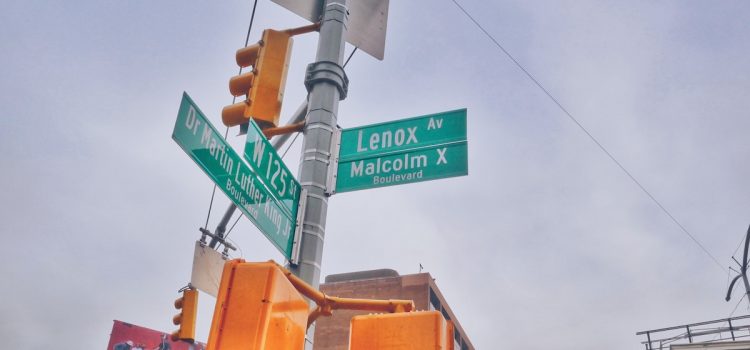

This article is an excerpt from the Shortform book guide to "The Autobiography of Malcolm X" by Malcolm X and Alex Haley. Shortform has the world's best summaries and analyses of books you should be reading.
Like this article? Sign up for a free trial here.
Why did Malcolm X change his name? What do his name changes tell us about his life?
You might know him only as Malcolm X. But, that wasn’t his original name, nor was it his name at the time of his death. The fact is that Malcolm X changed his name twice in his lifetime, and the reasons reflect his evolving beliefs and experiences.
Read more to learn why Malcolm X changed his name, as presented in his autobiography.
Why Malcolm X Changed His Name
Malcolm X explains that he was born Malcolm Little on May 19, 1925, in Omaha, Nebraska. (We’ll refer to him as Malcolm X for simplicity.) Why did Malcolm X change his name? Let’s look at the context of each change he made to his name to understand his reasons.
From Malcolm Little to Malcolm X
In 1946, at the age of 20, Malcolm X was sentenced to eight to 10 years in prison after being convicted on burglary charges. While he was in prison, some of Malcolm X’s family converted to Islam—and they promised that they could help him get out of prison if he, too, joined the religion.
The type of Islam Malcolm X’s family tried to convert him to was known as the Nation of Islam—a collection of teachings promoted by Elijah Muhammad (the Nation of Islam’s leader, who succeeded founder W.D. Fard), which posited that white people are the devil and that they’ve perpetrated evil against Black men by cutting them off from their ancestral cultures and convincing them of white superiority. Malcolm X explains that, according to this belief system, the different races were purposefully created by a scientist named Yacub through eugenic engineering, and the white race was supposed to rule the world for 6,000 years before Black people (who were the original and naturally superior race) would ascend to the top.
Malcolm X notes that he was paroled in 1952, having served six years of his sentence, and began living with his family in Detroit. He joined the Nation of Islam’s temple there and was inspired by the local Black Muslim community’s high moral standards—standards which he felt kept them out of trouble and poverty, while non-Muslim Black people in America continued to languish. It was around that time that he changed his last name from Little to X—a common practice in the Nation of Islam that signified the true ancestral surnames that had been stolen from Black people when they were enslaved.
(Shortform note: The Nation of Islam wasn’t the first or only collective of Black people to change their last names as a reflection of their newfound freedom: The practice can be traced back to the end of slavery, when freed slaves finally had the opportunity to choose their own names, rather than simply being called what their enslavers wanted them to be called.)
From Malcolm X to El-Hajj Malik El-Shabazz
Malcolm X explains that he’d heard criticism that the Nation of Islam was not truly Islamic—and since he was still a firm believer in Islam, he decided he needed to learn more about the religion. Since all Muslims are required to make a pilgrimage to Mecca at least once in their lifetime if they’re able, Malcolm X decided to do so—he wanted to see for himself what Muslims were like in the Middle East.
During Malcolm X’s travels, he was continually surprised by how united Muslims in the Middle East were—it seemed that racism didn’t exist there. This was the first time Malcolm X had experienced racial equality, and it bewildered and excited him to finally be treated as a human being by the general public.
Once Malcolm X got to Mecca, he was turned away—an admittance clerk wasn’t convinced he was a real Muslim, so he’d have to prove before a court that he was. When he went to court, he was declared a true Muslim. So, he was able to finally complete his pilgrimage to Mecca.
Malcolm X says that, before he left Mecca, he wrote a letter to some of his family members; collaborators at the Muslim Mosque, Inc.; and the media about the impact his pilgrimage had made on his beliefs—signing the letter with a different name, El-Hajj Malik El-Shabazz. He explained that he now believed the spread of Islam was the only thing that could solve racism in the United States since the bonds of religious fellowship were stronger than racial differences could undermine. He also no longer believed that all white people were evil; instead, he believed that the next generation of white people would play a role in achieving racial unity.
(Shortform note: A handwritten copy of Malcolm X’s letter from Mecca was recently discovered in a New York storage locker and put up for auction. Experts note that the name he signed at the bottom of the letter was of great significance: “El-Hajj” is an honorable title assigned to those who’ve completed the pilgrimage to Mecca, and “Malik El-Shabazz” signified his conversion to Sunni Islam—the mainstream branch of the religion. He converted because he was inspired by Islam’s emphasis on religious unity—both the unity of God and the unity of worshippers. Malcolm X may have been right on some levels about Islam’s potential for unifying the races—American Muslims are the most racially diverse religious group in the US.)

———End of Preview———
Like what you just read? Read the rest of the world's best book summary and analysis of Malcolm X and Alex Haley's "The Autobiography of Malcolm X" at Shortform.
Here's what you'll find in our full The Autobiography of Malcolm X summary:
- Malcolm X explains why he believed what he believed
- The historical and sociological context surrounding Malcolm X’s life
- Why Malcolm X was such a controversial figure






